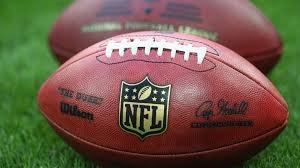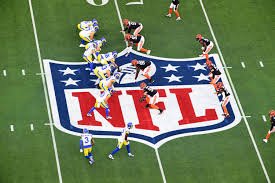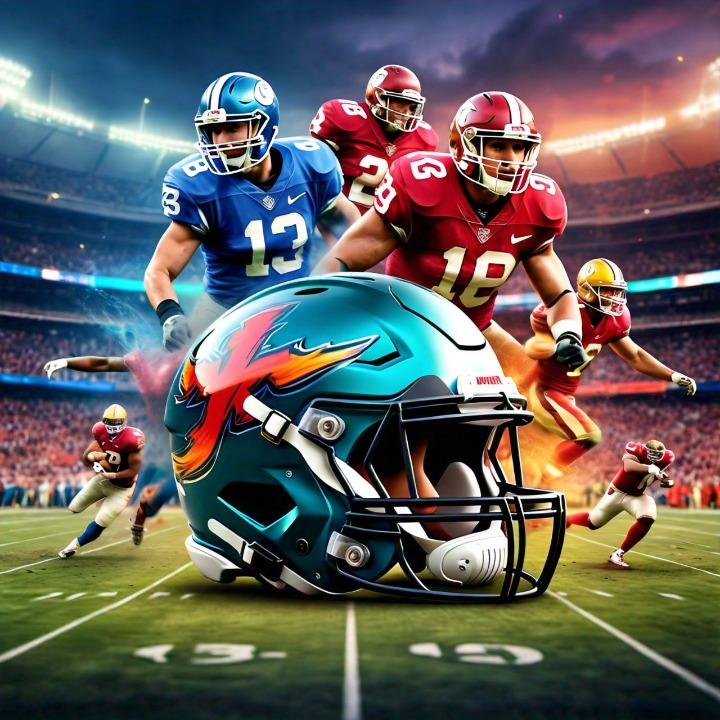American football is more than just a game; it’s a cultural phenomenon, a tactical masterpiece, and a spectacle of athletic prowess. Whether you’re a die-hard fan, a casual viewer, or just curious about the sport, understanding the intricacies of American football can offer a new appreciation for this dynamic game.
The Anatomy of American Football
At its core, American football is a game of strategy, strength, and skill played on a rectangular field, 100 yards long and 53 yards wide. The objective is deceptively simple: score more points than your opponent. However, the path to achieving that goal involves a complex interplay of strategy, teamwork, and athleticism.
The Field and Its Zones
The field is divided into two halves, each protected by end zones. The offense, the team with the ball, aims to advance down the field to score a touchdown, worth six points. The defense, on the other hand, tries to stop them, using a combination of physical play and strategic positioning. The game is punctuated by a series of plays or “downs,” where the offense has four attempts to advance the ball at least ten yards.

Key Positions and Their Roles
Quarterback (QB): Often considered the leader on the field, the quarterback calls the plays and is responsible for passing the ball or handing it off to running backs. A good QB reads the defense, makes quick decisions, and executes plays with precision.
Running Back (RB): Tasked with carrying the ball and running through the defense, running backs are crucial for both rushing plays and as pass catchers out of the backfield.
Wide Receiver (WR): These players are the primary targets for the quarterback’s passes. They must be fast, agile, and skilled in route running to create separation from defenders.
Linebacker (LB): Positioned behind the defensive line, linebackers play a versatile role in stopping the run and covering receivers. They must read the offense and react quickly.
Defensive Line (DL): These players line up on the line of scrimmage and aim to disrupt the offensive line, putting pressure on the quarterback and stopping running plays.

The Strategy Behind the Game
American football is often described as a chess match on grass. Coaches and players meticulously plan their strategies, each play designed to exploit the weaknesses of the opposing team while protecting their own vulnerabilities.
Offensive Strategies: Teams use a variety of formations and plays to move the ball efficiently. The playbook includes runs, passes, and trick plays, all designed to outwit the defense.
Defensive Strategies: Defenses use formations and schemes to counteract the offense’s strategies. They may employ zone or man-to-man coverage, blitzes, and stunts to disrupt the opposing team’s rhythm.
The Cultural Impact
American football has evolved into a cornerstone of American culture, with the Super Bowl being one of the most-watched sporting events globally. The sport’s impact extends beyond the field:

Community and Identity: High school and college football games are local events that foster community spirit and school pride. For many, the sport represents a significant part of their community identity.
Tradition and Rituals: Tailgating, marching bands, and cheerleaders are integral to the football experience. These traditions enhance the game-day atmosphere, making football more than just a sport but a shared cultural experience.
Media and Entertainment: The NFL, college football, and other leagues generate immense media content, from game broadcasts to in-depth analysis shows, highlighting the sport’s widespread appeal.
The Future of American Football
As the game evolves, there are ongoing discussions about player safety, technological advancements, and the global expansion of the sport. Innovations like improved helmet technology and advanced analytics are shaping the future of football, aiming to make the game safer and more exciting.
Global Reach
While American football is predominantly played in the U.S., its global footprint is growing. The NFL has hosted games in London and Mexico City, and leagues in other countries are gaining traction, reflecting the sport’s expanding international appeal.

Conclusion
American football is a sport that combines physicality with mental strategy, tradition with innovation. Whether you’re captivated by the strategy, the athleticism, or the communal experience, the sport offers a rich tapestry of elements that make it unique. As the game continues to evolve, it promises to maintain its place as a thrilling and integral part of American—and increasingly global—culture.

